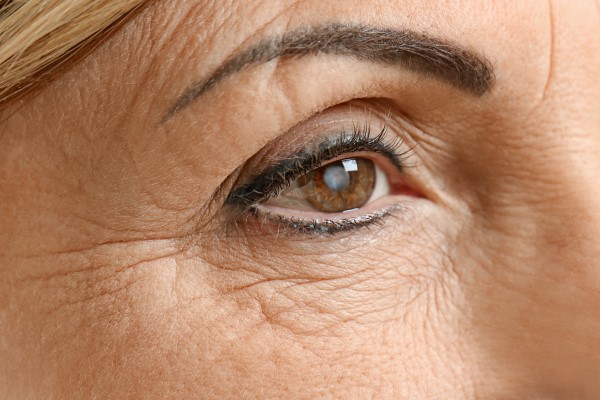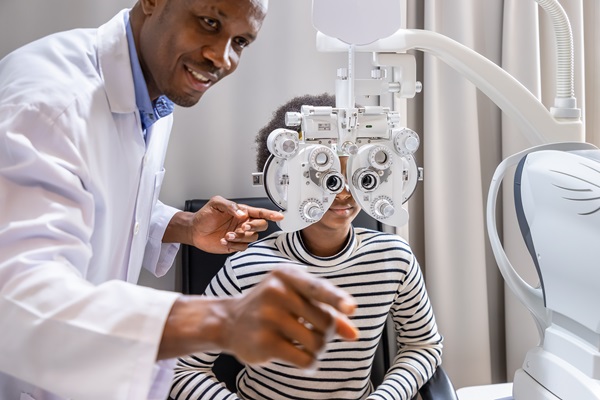What Is the Latest Treatments for Cataracts?

Cataract treatment options have improved a lot in the past few decades, and there are now more ways to go about treating the condition. The current treatment options for cataracts include surgical and non-surgical treatment options aimed at improving vision deterioration.
Cataract treatment options
The early stages of cataract treatments are aimed at improving the quality of the patient’s vision. People tend to experience blurry or cloudy vision when they have cataracts. Other symptoms include double vision, poor vision in the dark, light sensitivity, changes to current eyewear prescription, and double vision.
Some of these symptoms can be improved with eyewear like magnifying lenses, sunglasses, and a new prescription for eyeglasses. Even simple things like repositioning lights can help to deal with some symptoms. A doctor might recommend wearing a hat outdoors along with a pair of shades to protect the patient’s eyes from sunlight and prevent their condition from getting worse.
Surgical treatments for cataracts might be recommended when changes to a person’s vision begin to interfere with their ability to perform everyday activities like watching TV or driving.
Surgical cataract treatments typically involve removing the clouded lens from the patient’s eyes and replacing it with artificial eyes. Optometrists often recommend cataract surgery when a patient’s vision is 20/40 or worse. Vision this poor impacts a person’s daily activities and occupational performance.
If both of a patient’s eyes are affected by surgery, each eye is operated separately to minimize the risk of complications. The surgery is an outpatient procedure that involves using a local anesthetic. Patients might be advised to wear a night guard patch to protect the eye operated on during sleep.
The most cutting-edge treatments used to treat cataracts include:
- Phacoemulsification: This is the most commonly used procedure to remove cataracts. It involves using an ultrasonic device that vibrates into the eye via a small incision. The waves caused by the vibration break up the lens of the eye so it can be removed via suction. An artificial lens is then inserted into the eye. A single stitch might be used to close the eye
- Extracapsular cataract surgery: This is a lot like phacoemulsification but it requires making a larger incision so the lens is taken out in one piece. The larger incision requires more stitches to close the eye after the operation and it is more likely to lead to complications like induced astigmatism
- Intracapsular cataract surgery: This is a rare procedure that involves removing the lens and the capsule via a large incision. This treatment is only recommended for advanced cataracts
We can help to restore your vision
Cataracts can be managed with non-surgical treatments in the early stages and surgical treatments can be used to remove your cloudy lens and replace it with an artificial lens. Surgical treatments are recommended when the vision impairment caused by cataracts starts to interfere with daily activities. Call or visit our Dallas clinic to set up an appointment with our optometrist.
Request an appointment here: https://www.texasoptical.net or call Texas Optical at (214) 771-7333 for an appointment in our Dallas office.
Check out what others are saying about our services on Yelp: Read our Yelp reviews.
Recent Posts
Blurry vision can interfere with the life that you want to live. It can make you less able to engage with your surroundings and may even limit your ability to do daily tasks, such as driving. However, by searching the internet for "optometrist near me", you can find a professional to help resolve your blurry…
Think you might need a vision test? Read on to learn more. Vision is an element of our everyday routine and impacts exactly how we relate to the world. Nevertheless, these changes in eyesight are usually subtle and gradually decrease the quality of life without notice. These changes can be detected with regular vision tests.…
A contact lens exam is the most accurate way to ensure that a new corrective lens fits properly on the eye’s surface. Contact lenses that fit well can help you see more clearly without causing dry eyes or discomfort. A contact lens exam is a simple process, and it can even be conducted alongside a…
Long gone are the days of choosing between clear vision and eye protection. Safety glasses are available to all who need them, whether working in a factory, landscaping, or playing sports. Here is what you can expect when consulting our optometrist for these glasses.No matter the reason one needs safety glasses, patients will require an…


